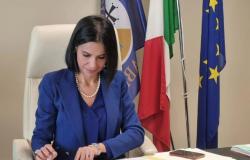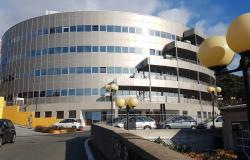Giving life back to abandoned or little-frequented spaces and redesigning squares, streets and city streets: in a word, urban regeneration. It is the theme that has been explored in depth “Nel Mirino”, the Telelibertà program hosted by Nicoletta Bracchi and Thomas Trenchi. For the occasion, teachers and students from the Piacenza branch of the Polytechnic were present at the Rotative Space. And we talked about Piacenza, for example about Via Scalabrini, where in the terminal stretch towards Piazzale Roma, the Piacenza headquarters of the Polytechnic of Milan concentrates its spaces between the former Neve barracks and the Giulio Ulisse Arata campus, that is to say the former slaughterhouse.
“The Piacenza headquarters of Polimi and the campus are close – he says Michele Roda of the Department of Architecture and Urban Studies – 250 meters where you can breathe an international air. Also to accommodate the increase in the number of students, we would like to redesign that stretch of Via Scalabrini by eliminating parking lots, creating seats and paths, making it a corridor also useful for commercial activities. Let’s remember that it is the places that make an experience beautiful.”
Regarding via Scalabrini, the thesis student in Sustainable Urban Planning Letizia Tundo, who wrote his thesis on the future scenarios of the Caorso nuclear power plant area, claims that those few hundred meters «are very much experienced by the student community» “It is a place – he says – where there is a constant coming and going of people and vehicles. Via Scalabrini at that point would require greater sensitivity to create spaces that can be frequented by students as they live their university life”.
But urban regeneration must be, in the eyes of Anna Anzani, teacher of Interior Architecture and Installation at Polimi, something sweet. In fact, architecture is increasingly about mending, integration and hybridization, but also minimal interventions on abandoned areas. “Today the approach must be very light – says Anzani – without changing the structure of the city, we are witnessing very rapid changes in customs and needs. It is therefore better to work on buildings by doing almost nothing or in any case with minimal interventions, intervening in a temporary and reversible way. The rules, however, do not help from this point of view.”
The P4P – Piacenza for Public – workshop was held at the Polytechnic this week with 50 students engaged in architectural and design planning, in which some groups of international schools also participated, such as Esa St. Luc in Brussels and Fh Joanneum of Graz, partner of the Polytechnic for the European BIP Erasmus+ project. Chiara Onofrio, student present at “Nel mirino”, through this experience she became interested in Piazza Casali. “The square is dotted with various buildings that are abandoned, rarely used, or to which access is blocked – she states – among the ideas that emerged we thought about redesigning the buildings in the square that no longer have their original value and function. We imagined how they could be experienced and enjoyed in the near future.”
Both Anzani and Roda finally invite us to look down to fly high. “Rather than skylines, it is preferable to talk about brick masonry surfaces – says the first – we know, thanks to neuroscience, that by looking at the particular materials of historical architecture we mentally simulate the gestures with which they were worked. It is a multisensory, tactile experience, today we are increasingly led to experience architecture in an experiential way”. “Since Piacenza is a city full of courts and courtyards – adds Roda – the real challenge is to build and expand the spaces of the public city. We should lower our gaze and think about the ground floors of the city, which are the places where the community lives. It is necessary to enter spaces that are no longer accessible, as was recently done in Piacenza at the former Chiesa del Carmine”.








